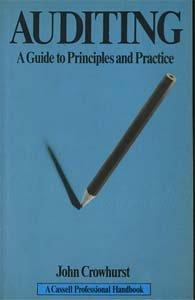Question
1.) Jane and John Smith have been married for five years. On February 20, 2015 they purchased their first home, a 3,000 ft 2 home
1.) Jane and John Smith have been married for five years. On February 20, 2015 they purchased their first home, a 3,000 ft2 home in Dallas, for $300,000. In July, 2017 Jane accepted a job that required her to travel between Dallas and Tucson frequently; the couple moved to Tucson, where they purchased a second home for $500,000. They kept the Dallas home and Jane stayed in it when her job took her to Dallas. This year, they decided to move to Denver CO. They sold the house in Arizona for $650,000 (a $150,000 profit), and have put the house in Dallas up for sale, with a listing price of $775,000 (a $475,000 profit).
How much gain should they recognize on sale of the Arizona home?
2a.) Carmen bought a home in 2013 for $120,000 and used it both as a principal residence and as an office in her accounting practice. In 2018, she sold the home for $210,000, realizing a gain of $90,000. She claimed depreciation expense on the home during the period she owned it in an amount totaling $40,000. How much of her gain can Carmen, a single taxpayer, exclude under Sec. 121?
2b.) Assume that Carmen must pay tax at 25% on her depreciation recapture. How much total tax will she owe in connection with the sale of her home?
3.) Celina married in January, 2019. After the wedding, she moved into her spouses home, which had been used as the spouses principal residence since it was purchased in November 2018. The original purchase price of the home was $375,000. Unfortunately, six weeks after the marriage, Celinas spouse was killed in an automobile accident. She put the home up for sale immediately and sold it in April for $500,000. Recall that as a surviving spouse, Celina can use the $500,000 exclusion, and that she can count her former spouses usage and ownership of the home as her own. She sold the house because of the death of her spouse.
Assume the house was bought and sold on the 1st day of the months indicated above. What is the prorated exclusion available to her in determining how much of the gain on the sale of the house she must report?
4.) Earlier this year, Rosalyn exchanged a tract of land for a building. Her tax basis in the land was $600,000 and its value was $800,000. In exchange for the land, she received a building worth $550,000 and $250,000 cash. How much gain will she recognize on the exchange?
5.)
|
| Tax Basis | FMV | Liability |
| Joe Property 1 | $500,000 | $800,000 | $200,000 |
| Brandy Property 2 | $600,000 | $950,000 | $350,000 |
Joe transferred property 1 to Brandy in exchange for property 2. The two properties were of a like-kind with the same net value. Net value is equal to FMV less debt encumbering the property. From the table above, we can see that the net value of the property transferred by Joe is $600,000 (800,000 200,000), the same as the net value of the property transferred by Brandy (950,000 350,000).
WHAT TAX BASIS WILL BRANDY TAKE IN PROPERTY 1?
6.) Bart wanted to exchange an apartment complex he owned in Lubbock, TX for other investment real estate in Dallas, TX. He could not find anyone in Dallas with whom to make an exchange, however, so he contacted a Sec. 1031 broker (a real estate agent who specializes in like-kind exchanges) and arranged a three-corner exchange. He found a buyer for his Lubbock property and sold it on May 1, 2019. The buyer paid the purchase price to the Sec. 1031 broker who agreed to hold it in trust for Bart. What is the latest date by which Bart must identify replacement property in Dallas? (Choose the date closest to your answeri.e., if your answer is October 30, choose answer b).
| a. | June 15, 2019 | |
| b. | October 28, 2019 | |
| c. | June 1, 2019 | |
| d. | May 1, 2020 |
7.) Sean owned a rental equipment shop at a ski resort. His shop was destroyed in a snow slide last year. He received insurance proceeds of $900,000, which he used to rebuild his store after the snow from the slide melted. His tax basis in the original store was $500,000 and he rebuilt the store on the same spot for $800,000. He then resumed normal operations in the new, slightly larger building. The new store was qualified replacement property. What will be his tax basis in the new store?
Step by Step Solution
There are 3 Steps involved in it
Step: 1

Get Instant Access to Expert-Tailored Solutions
See step-by-step solutions with expert insights and AI powered tools for academic success
Step: 2

Step: 3

Ace Your Homework with AI
Get the answers you need in no time with our AI-driven, step-by-step assistance
Get Started


